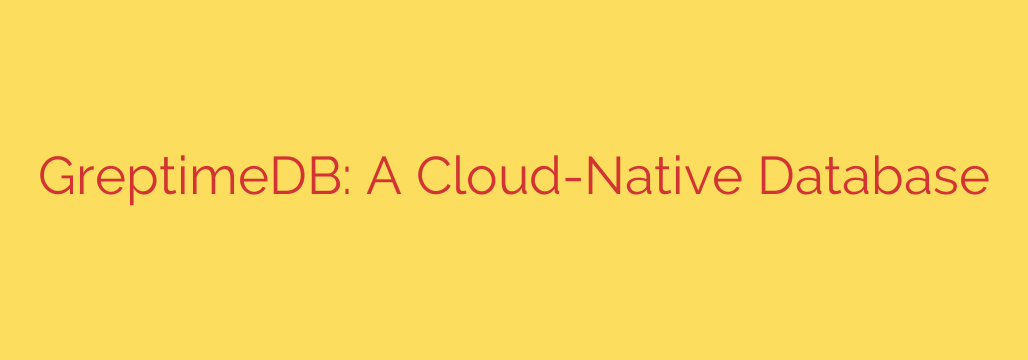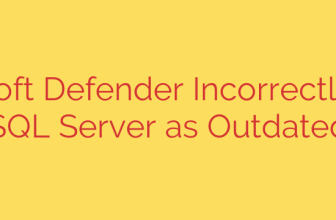
GreptimeDB Explained: A Deep Dive into the Cloud-Native Time-Series Database
In today’s data-driven world, the sheer volume of time-stamped data generated by applications, IoT devices, and monitoring systems is exploding. This information, known as time-series data, is critical for observability, real-time analytics, and forecasting. However, traditional databases often struggle to handle the unique demands of ingesting, storing, and querying this data at scale. Enter GreptimeDB, a modern solution built from the ground up to conquer these challenges.
GreptimeDB is an open-source, cloud-native time-series database designed for high performance, massive scalability, and operational efficiency. It provides a powerful engine to manage the relentless flow of metrics, logs, and traces, making it an ideal choice for the next generation of monitoring and IoT platforms.
Core Features That Set GreptimeDB Apart
What makes GreptimeDB a compelling choice in a crowded market? It boils down to a thoughtful combination of modern architecture and powerful, user-friendly features.
Cloud-Native Architecture: At its core, GreptimeDB is designed for the cloud. Its architecture decouples storage and compute, allowing them to scale independently. This means you can handle massive write loads without over-provisioning expensive query resources, leading to significant cost savings and unparalleled elasticity.
Built with Rust for Unmatched Performance: The database is written in Rust, a language renowned for its performance, memory safety, and concurrency. This choice ensures that GreptimeDB is not only incredibly fast but also highly reliable, preventing common bugs and security vulnerabilities that plague systems built with other languages.
Highly Efficient Columnar Storage: GreptimeDB utilizes a columnar storage format, which is exceptionally well-suited for the analytical queries typical of time-series workloads. By organizing data in columns instead of rows, the database can compress data more effectively and read only the necessary columns for a query, dramatically speeding up performance.
Broad Compatibility and Integration: One of the most significant advantages of GreptimeDB is its seamless integration with the existing observability ecosystem. It offers native support for popular protocols and data models, including Prometheus, InfluxDB, OpenTSDB, and a PromQL-compatible query engine. This makes migration from other systems straightforward and lowers the barrier to adoption.
Powerful and Accessible Querying: While it supports specialized query languages, GreptimeDB also provides full SQL support. This allows developers and data analysts to leverage their existing skills to query and analyze time-series data without needing to learn a new, niche language. It also supports Python scripts for more complex, in-database analytics.
Key Use Cases for GreptimeDB
The unique architecture of GreptimeDB makes it a perfect fit for several critical applications where time-series data is paramount.
Observability and System Monitoring: This is the primary use case for many time-series databases. GreptimeDB can effortlessly ingest and store metrics, logs, and traces from applications and infrastructure. Its high performance ensures that you can query this data in real-time to debug issues, monitor performance, and set up sophisticated alerts.
Internet of Things (IoT) and Industrial IoT (IIoT): IoT devices generate continuous streams of sensor data, from temperature readings to GPS coordinates. GreptimeDB is built to handle this high-volume, high-cardinality data, allowing businesses to monitor device health, analyze usage patterns, and build predictive maintenance models.
Financial Services: In the world of finance, time-stamped data is everything. GreptimeDB can be used to store stock market data, trade histories, and other market indicators for real-time analysis, algorithmic trading, and risk management.
Actionable Security and Implementation Tips
When deploying any database, security and best practices are crucial. Here are some tips for getting started with GreptimeDB:
- Secure Your Endpoints: Ensure that access to your GreptimeDB instance is tightly controlled. Use firewalls and network security groups to restrict access to trusted IP addresses only.
- Implement Authentication: Always enable authentication for your database. This ensures that only authorized users and applications can connect and perform operations on your data.
- Start with GreptimeCloud: For those who want to get started quickly without managing infrastructure, the fully managed GreptimeCloud service offers a secure, scalable, and production-ready environment. This offloads the operational burden of maintenance, backups, and scaling.
- Leverage Its Schema Flexibility: GreptimeDB is schema-flexible, automatically adding new columns as they appear in your data. While convenient, it’s good practice to have a clear data model to maintain consistency and optimize query performance.
The Future is Time-Series
As our world becomes more connected, the importance of efficiently managing time-series data will only grow. Solutions like GreptimeDB, with their focus on cloud-native principles, performance, and ease of use, are poised to become a fundamental part of the modern data stack. By offering a scalable, cost-effective, and developer-friendly platform, GreptimeDB empowers organizations to unlock valuable insights from their time-stamped data and build more intelligent, reliable systems.
Source: https://www.linuxlinks.com/greptimedb-cloud-native-database/







